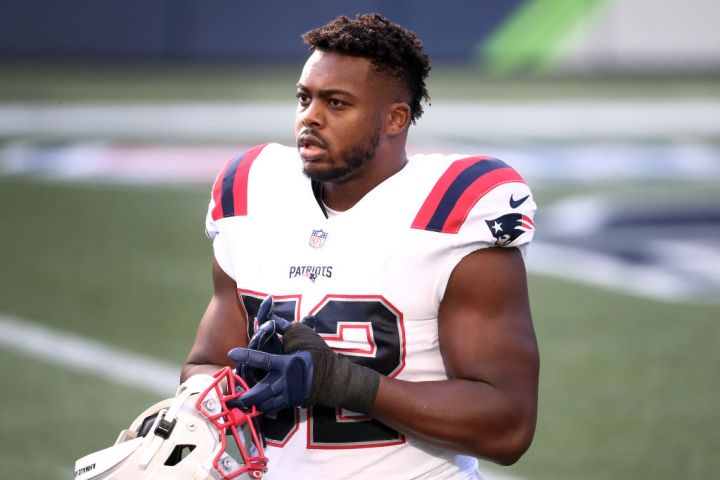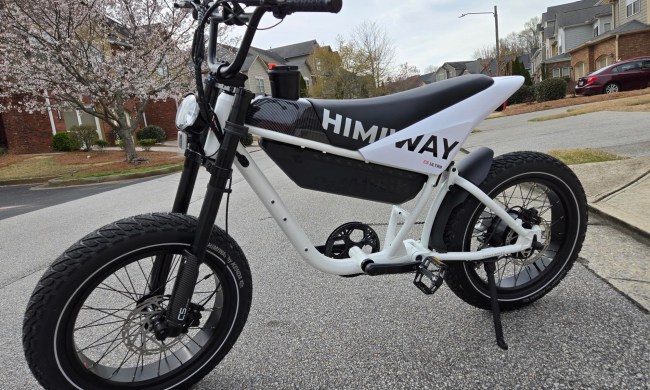The amount of data that gets captured during an NFL game these days is absolutely mind-blowing.
There’s so much that it’s almost hard to comprehend. But John Pollard, vice president of business development for Zebra Technologies, the official on-field player-tracking provider of the NFL, paints a pretty good picture:
“Every player that participates in a game, whether they’re on the sidelines or on the field, has RFID tags in their shoulder pads.” he explained in an interview with Digital Trends. “Most players have two tags — one on each shoulder pad, sometimes with a third one between the shoulder blades. All the field officials are also tagged, as well as things like the pylons and the yardsticks on the field. The ball itself has an RFID tag as well. And all these tags communicate with a series of receiver boxes that are permanently installed around the perimeter of all the stadiums in the NFL.”
“The player tags send a signal to the receiver boxes 12 times per second.” he continues. “The ball itself blinks 25 times a second. And so with that information, we can find out where they are on the field, within a couple of inches of accuracy. From there, we can tell a player’s proximity from their own teammates and the opposing players, and we can also capture their speed for an independent play or a series of plays. On the ball, we’re tracking velocity and rotational information as well, which allows us to mathematically determine the height of throws, punts, and kicks.”
In other words, the NFL tracks real-time location, speed, and acceleration data for every player, every object, and every play, on every inch of the field — and it’s been doing so for every regular season football game for the past seven years.
But here’s the kicker: Despite the fact that the league has been capturing this data for the better part of a decade, we’re only now starting to see how it’s changing the game.
Deep stats, deeper strategy
All this data collection has unlocked a completely new generation of stats. It’s far beyond the basic stuff you’re probably used to, like touchdowns, rushing yards, and completed passes. Nowadays, they track all that stuff, plus speed, acceleration, location, and time. But really, those raw measurements are just the tip of the iceberg. There’s a whole host of derivative statistics that can be calculated by combining and correlating all these data points — things like Average Intended Air Yards, Expected Completion Percentage, and Completion Percentage Above Expectation. It’s a football nerd’s dream.
It also allows the NFL to measure things that were previously impossible to quantify — like aggressiveness. Prior to all this sensor-driven data, a quarterback’s aggressiveness was a completely subjective quality with no real significance. Now, it has a clear-cut definition: It’s “the amount of passing attempts a quarterback makes that are into tight coverage, where there is a defender within one yard or less of the receiver at the time of pass completion or incompletion.” Such a stat would be impossible to define without exact time, location, and distance information, but thanks to Zebra’s sensor tech, this is being tracked and updated on every passing play a QB makes.
“It’s being incorporated into not only the strength and conditioning component of our training, but also for coming back from injury.”
It doesn’t take a big leap of the imagination to see how this data might affect certain aspects of the game. For example, it’s easy to see how deeper, more granular, and more abundant statistics on player performance might change what scouts look for in prospective recruits, or help a coach make better decisions on what to focus on during practice.
But as New England Patriots linebacker Brandon Copeland explains, training and scouting are merely the most obvious uses of data. Teams and players are using it for far, far more than just performance tracking.

“It’s being incorporated into not only the strength and conditioning component of our training, but also for coming back from injury,” he tells Digital Trends. “That’s another thing that’s really big. Let’s say I just tweaked my hamstring. When I feel like I’ve recovered and I’m getting back up to speed, I can literally go do a sprint to test that. When I walk off the field, there’s somebody sitting there that can tell me exactly how fast I was going. So if they say, ‘Oh, well, you’re a little slower than you were two weeks ago when you had no hamstring injury,’ then I know there still may be something there that we need to to address. That kind of information is definitely vital from a player’s perspective.”
“So, this information doesn’t just serve one purpose,” he continues. “Guys pick and choose; they use all this data for different reasons. For some guys, it’s more of an injury-prevention/maintenance thing. For others, it’s a training thing. For other guys, it’s more of a ‘hey, let’s compete! I’m faster than you!’ kind of thing.”
A new dimension of play
Perhaps the most profound change of all, though, isn’t how data is altering the routines of players, coaches, and teams. It’s how data literacy — the ability to access, interpret, understand, and apply data-driven insights — is quickly becoming a make-or-break skill for players. Much like tackling or kicking field goals, using data is a skill that can be learned and improved on, and the more adept a player is at leveraging data, the more likely they are to succeed. Increasingly, it’s what separates the rookies from the veterans.

“Rookie year is a whirlwind,” says Copeland, “especially as an undrafted free agent. There’s a lot of stuff going on. You’re trying to develop a routine, learn the playbook, and really just make the team. And there are so many resources out there that you could just swim in over your head. At first, you’re just kind of going with the flow, but at a certain point, you figure things out and start to really understand the data. You realize that this resource exists in practice, it exists in spring training, and all the different things that we’re doing. A lot of veteran players take it into account.”
Copeland expects this to get easier as the technology matures. It’s taken the NFL years to build up not only the technological infrastructure to capture the data, but also the distribution pipelines — which are still being figured out. The league hasn’t quite found its footing when it comes to making all this data accessible and easy to understand for players.
“Right now, you have to go ask for that information.” says Copeland. “It’s always in the coach’s hands. But if we can encourage the coaches and staff to try to deliver that information to the players, if we can continue to withdraw the barriers of access to the information, I think that will be revolutionary in the long run.”
“I think this is the next evolution,” adds Pollard. “The players in the NFL now, they’re fluent in technology. They’re fluent in information. And they take care of the bodies like athletes have never before.



